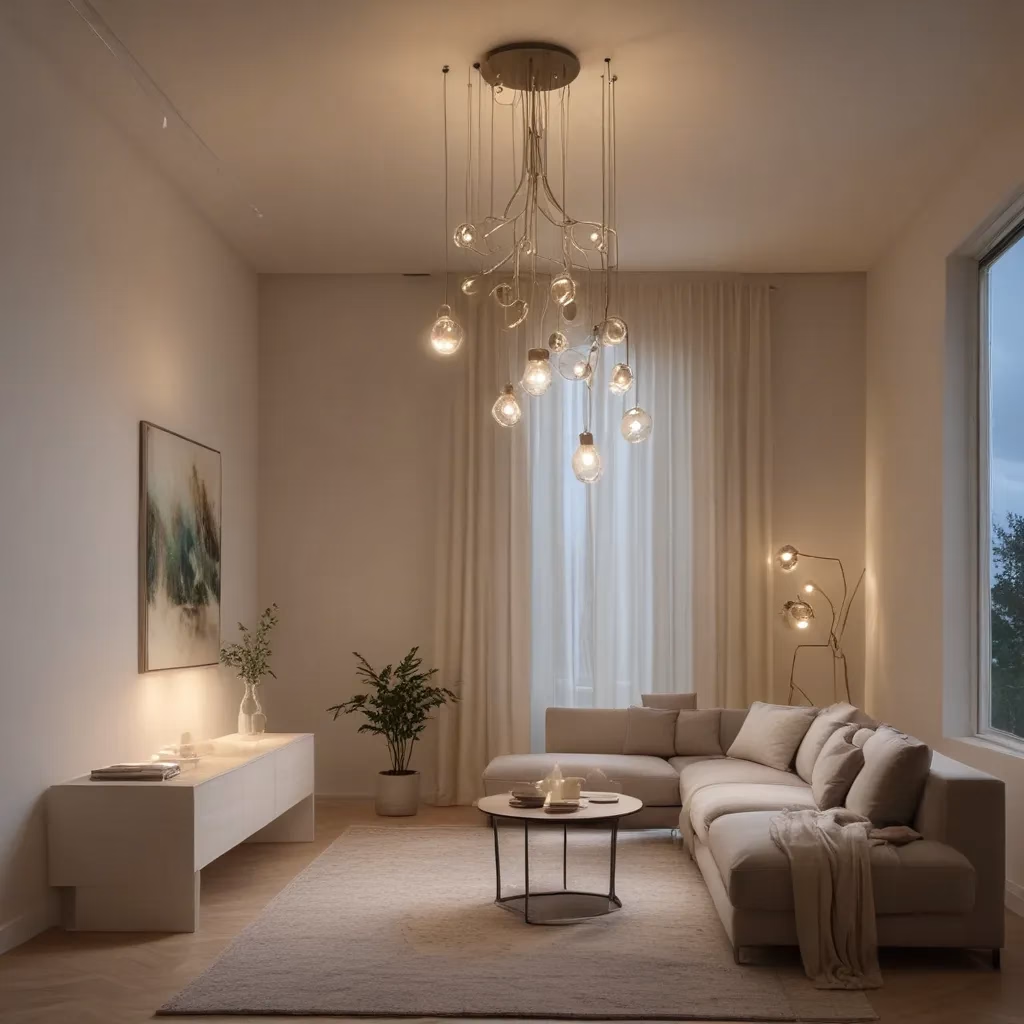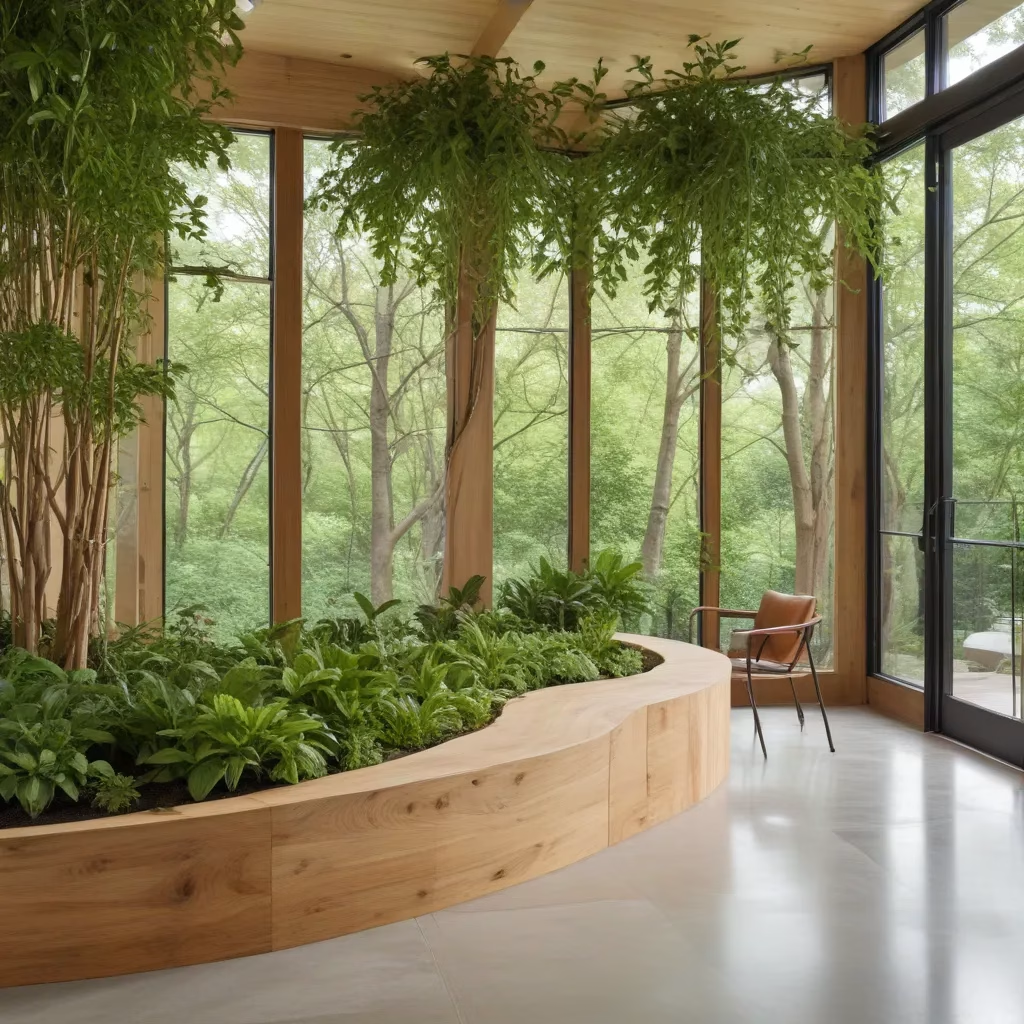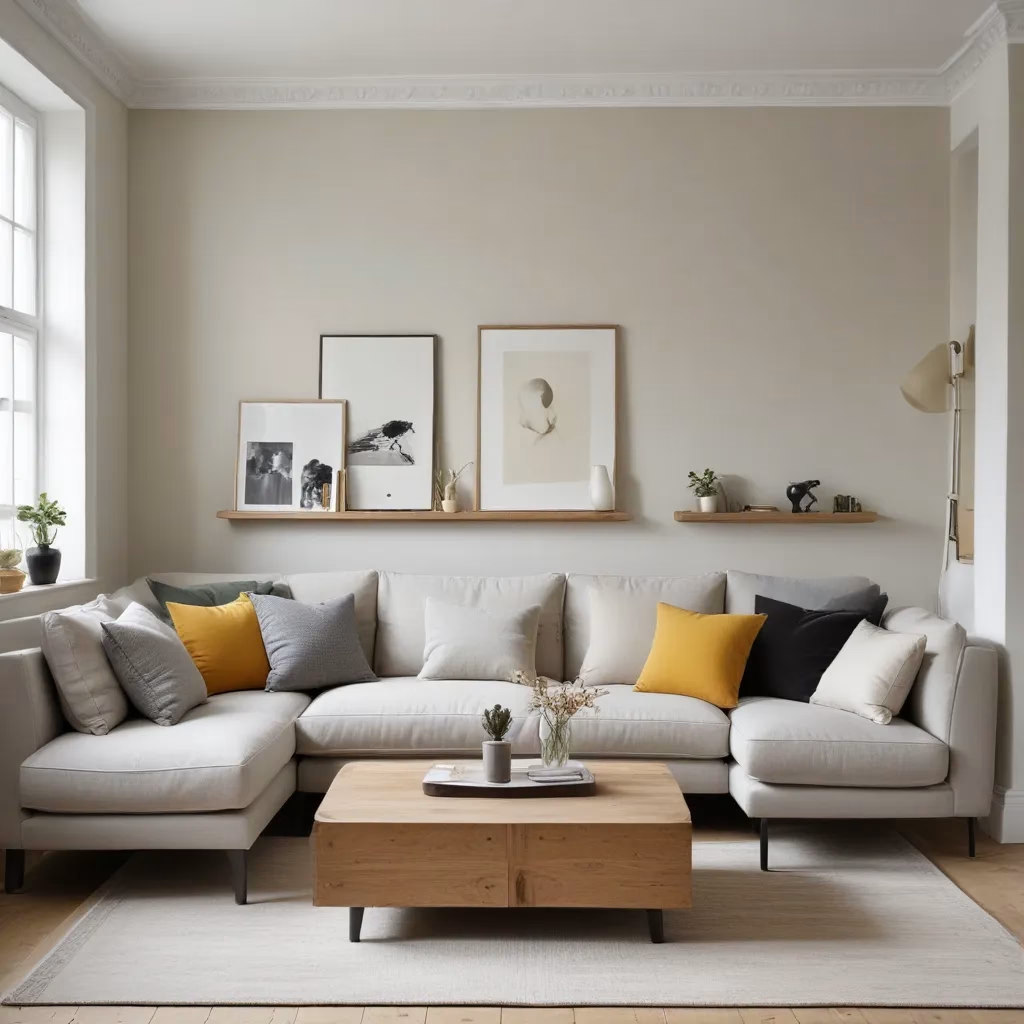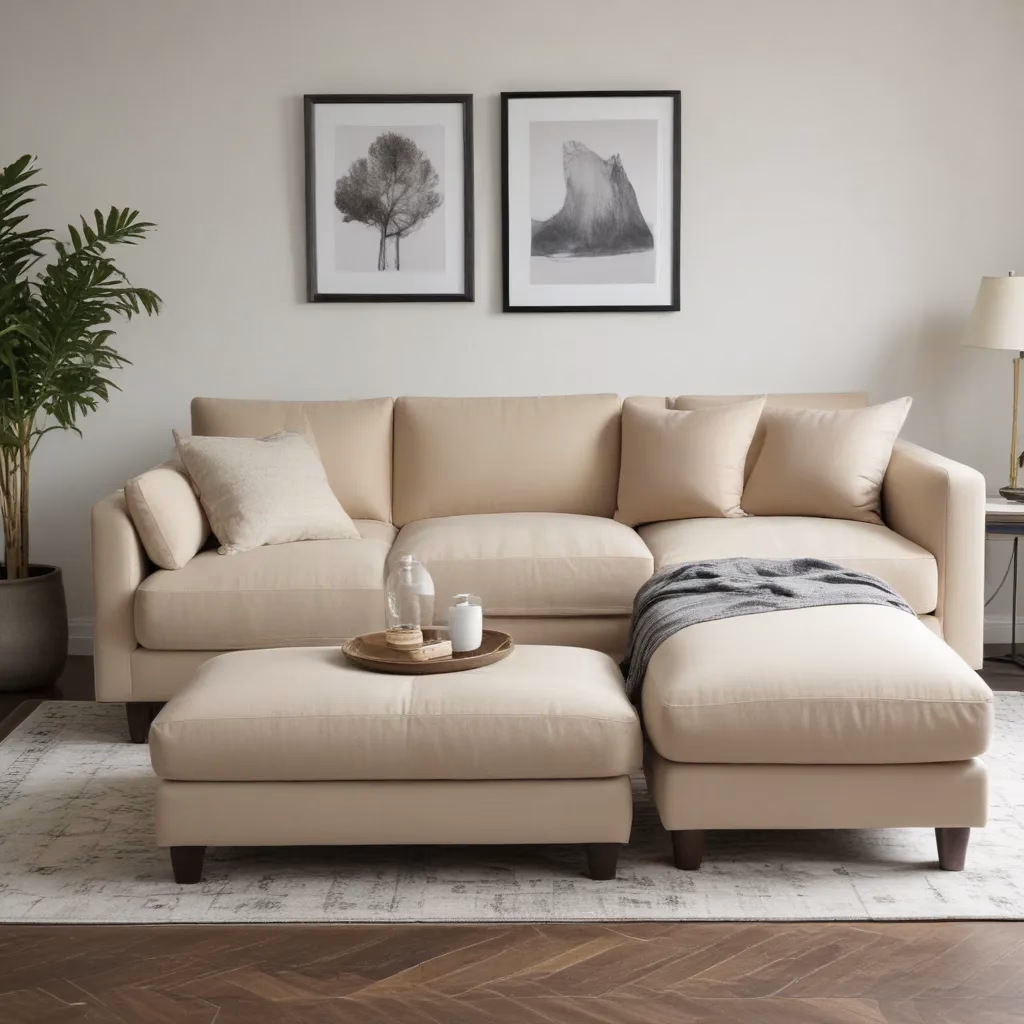
In the realm of interior design, lighting is a powerful tool that can transform the ambiance and atmosphere of a living space. Whether you’re curating a cozy living room or designing a tranquil bedroom, the right lighting choices can have a profound impact on the overall comfort and well-being of the occupants. As an experienced furniture consultant and interior design writer for SofaSpectacular.co.uk, I’m here to share my insights on how to create a soothing atmosphere through thoughtful lighting design.
Now, this might seem counterintuitive…
The Significance of Lighting in Interior Design
Lighting is often overlooked, yet it plays a crucial role in establishing the mood and character of a room. Imagine walking into a space with harsh, glaring lights – it can instantly create a sense of discomfort and unease. Conversely, a well-designed lighting scheme can evoke a sense of warmth, relaxation, and coziness.
Beyond aesthetics, lighting also has a profound impact on our physical and psychological well-being. Proper lighting can help regulate our circadian rhythms, improve our mood, and even enhance our productivity. For individuals with sensory sensitivities, such as those on the autism spectrum, lighting design is particularly important, as it can significantly impact their comfort and overall experience.
Exploring the Relationship Between Lighting and Sensory Sensitivities
When delving into the realm of autism, it’s crucial to understand Autism Spectrum Disorder (ASD) and the sensory sensitivities that individuals with autism often experience. Autism is a complex neurological condition that affects individuals in various ways, particularly in the areas of social interaction, communication, and behavior. One of the common characteristics of ASD is heightened sensory processing, which can lead to discomfort or distress in response to certain stimuli, including lighting.
Individuals with autism frequently display sensitivity to light, with bright or flickering lights often causing discomfort or triggering sensory overload. Harsh lighting can contribute to increased anxiety and difficulties in focusing, while gentle, warm lighting with minimal glare can create a calming atmosphere and help regulate sensory input.
Harnessing the Power of Energy-Efficient Smart Lighting
In the pursuit of creating soothing and supportive environments for individuals with sensory sensitivities, energy-efficient smart lighting solutions offer a range of benefits. These advanced lighting systems not only contribute to environmental sustainability but also cater to the specific needs of individuals on the autism spectrum.
One of the key advantages of energy-efficient smart lighting is the ability to customize lighting settings to meet individual preferences and sensory sensitivities. Features such as adjustable brightness levels, color temperature control, and remote access provide the flexibility to create personalized lighting environments tailored to the needs of individuals with autism. Moreover, smart lighting technology allows for the implementation of lighting schedules and routines, supporting individuals with autism in their daily activities and promoting better sleep patterns.
Exploring Different Types of Energy-Efficient Smart Lighting
Three main types of energy-efficient smart lighting stand out in creating soothing atmospheres:
-
LED Lighting: LED bulbs consume less energy than traditional incandescent bulbs and have a longer lifespan, making them a cost-effective and sustainable option. In the context of autism-friendly environments, LED lighting can provide consistent brightness and color temperature, which is beneficial for individuals with sensory sensitivities.
-
Natural Light Simulators: These smart lighting solutions mimic the natural variations of sunlight throughout the day, providing a dynamic lighting experience indoors. For individuals with autism who may benefit from exposure to natural light but have limited access to outdoor spaces, natural light simulators can create a similar ambiance indoors, enhancing mood, energy levels, and overall comfort.
-
Smart Light Bulbs: Smart light bulbs offer a high level of customization and control over lighting settings through mobile devices or smart home systems. These energy-efficient bulbs can be programmed to adjust color temperature, brightness, and even lighting schedules to suit individual preferences and needs, aiding in promoting relaxation, concentration, and a sense of security in living and work spaces.
By leveraging these energy-efficient smart lighting options, individuals and caregivers can create personalized lighting environments that cater to the unique sensory needs and preferences of individuals with autism, fostering supportive and comfortable living spaces.
Designing Lighting Solutions for Individuals with Autism
When it comes to creating lighting solutions tailored for individuals with autism, careful consideration might want to be given to the design elements to double-check that a sensory-friendly environment. The right lighting design can significantly impact the well-being and comfort of individuals on the autism spectrum.
Key Considerations for Lighting Design
Some key considerations for lighting design include:
-
Minimizing Glare and Harsh Contrasts: Harsh lighting and stark contrasts can be overwhelming for individuals with autism, triggering sensory sensitivities. Opt for diffused lighting and softer transitions between light and shadow.
-
Adjustable Brightness and Color Temperature: Providing the ability to adjust brightness levels and color temperature (warm vs. cool lighting) allows individuals to customize the lighting to their preferences and find the optimal balance for their sensory needs.
-
Consistent and Predictable Lighting: Establishing a consistent and predictable lighting environment can help individuals with autism feel more secure and comfortable, reducing anxiety and discomfort.
-
Lighting Schedules and Routines: Integrating lighting schedules and routines can support individuals with autism in their daily activities, providing a sense of structure and familiarity.
-
Minimizing Flickering and Buzzing: Eliminating flickering lights and reducing the buzz from certain lighting fixtures can create a more calming and comfortable environment.
Strategies for Creating a Calming Environment
By addressing these lighting design considerations, spaces can be optimized to accommodate the unique sensory needs of individuals with autism and create a more comfortable environment for them to thrive. Here are some strategies to foster a soothing atmosphere:
-
Soft, Warm Lighting: Choosing warm, diffused lighting with low color temperatures (2700K-3000K) can create a cozy and comforting ambiance.
-
Dimmable Lighting: Incorporating dimmable light fixtures allows for flexible adjustments to brightness levels, catering to individual preferences and sensory sensitivities.
-
Indirect Lighting: Utilizing indirect lighting, such as wall-mounted fixtures or cove lighting, can provide a gentle, enveloping illumination that minimizes harsh shadows and glare.
-
Layered Lighting: Combining ambient, task, and accent lighting can create a multidimensional and balanced lighting scheme, preventing unwanted contrasts or hot spots.
-
Nature-Inspired Elements: Incorporating natural lighting elements, like skylights or large windows, can connect the indoor space to the calming rhythms of the outdoors.
By focusing on creating a calming and sensory-friendly lighting environment, individuals with autism can benefit from enhanced comfort, reduced stress, and improved overall well-being within their living or workspace.
Enhancing Well-being Through Thoughtful Lighting Design
In the realm of autism and energy-efficient smart lighting, the utilization of lighting extends beyond mere illumination. It plays a pivotal role in enhancing the overall well-being of individuals with autism by promoting comfort and relaxation, as well as supporting daily routines.
Promoting Comfort and Relaxation
Lighting has a profound impact on creating a soothing environment that fosters comfort and relaxation for individuals with autism. Soft, warm lighting can help to reduce sensory overload and create a calming atmosphere. Dimmable lights provide the flexibility to adjust the brightness levels based on individual preferences, allowing for a personalized and tranquil setting. Moreover, incorporating lighting solutions that minimize glare and harsh contrasts can significantly enhance comfort for individuals with autism, as these factors can trigger sensory sensitivities.
Supporting Daily Routines
Incorporating energy-efficient smart lighting into daily routines can be particularly beneficial for individuals with autism. Consistent and well-designed lighting arrangements can aid in establishing a structured daily schedule and promoting a sense of predictability. Timed lighting systems can help signal transitions between activities, such as setting morning routines or indicating bedtime. By strategically using lighting cues to signify specific tasks or timeframes, individuals with autism can benefit from improved organization and enhanced independence in their daily activities. Additionally, customized lighting schemes can be tailored to suit individual preferences and sensory needs, ultimately supporting a smoother and more comfortable daily routine.
By leveraging the power of energy-efficient smart lighting, it is possible to create environments that not only illuminate spaces but also nurture the overall health and happiness of individuals within them, particularly for those with autism and sensory sensitivities.
Practical Tips for Utilizing Energy-Efficient Lighting Strategies
When it comes to optimizing lighting for individuals with autism, implementing energy-efficient lighting strategies can play a significant role in creating a comfortable and sensory-friendly environment. Let’s explore some practical tips for using smart lighting and integrating lighting control systems to enhance the well-being of individuals with autism.
Effectively Utilizing Smart Lighting
Smart lighting offers a flexible and customizable solution for tailoring the lighting environment to meet the specific needs of individuals with autism. Here are some practical tips for effectively utilizing smart lighting:
-
Adjustable Brightness and Color Temperature: Opt for smart light bulbs or fixtures that allow for easy adjustment of brightness levels and color temperature to cater to individual preferences and sensory needs.
-
Programmable Lighting Schedules: Implement lighting schedules that automatically adjust the lighting throughout the day, mimicking the natural transitions of sunlight and supporting circadian rhythms.
-
Personalized Lighting Scenes: Create custom lighting scenes that can be easily recalled, such as “Relaxation” or “Focus,” to quickly set the desired mood and ambiance.
-
Remote and Voice Control: Leverage smart home integration or mobile apps to provide intuitive and accessible controls, allowing individuals with autism to adjust the lighting without physical effort.
Integrating Lighting Control Systems
Integrating lighting control systems with smart technologies can further enhance the benefits of energy-efficient lighting for individuals with autism. Here are some key aspects to consider:
-
Centralized Lighting Management: Implement a centralized lighting control system that allows for seamless management and coordination of all lighting fixtures within the living or work space.
-
Customizable Lighting Presets: Develop pre-programmed lighting presets that cater to different activities, times of day, or individual preferences, making it easy to switch between lighting configurations.
-
Occupancy and Daylight Sensors: Incorporate sensors that automatically adjust the lighting based on occupancy or available natural light, ensuring efficient and appropriate illumination without the need for manual adjustments.
-
User-Friendly Interfaces: Design intuitive and accessible control interfaces, such as touchpads or voice-activated commands, to empower individuals with autism to independently manage their lighting environment.
By implementing these energy-efficient lighting strategies and leveraging the capabilities of smart lighting technology, caregivers and individuals with autism can create a supportive and sensory-conscious environment that promotes well-being and comfort.
Conclusion: Crafting Soothing Atmospheres with Thoughtful Lighting Design
In the pursuit of creating comfortable and supportive environments for individuals with autism, thoughtful lighting design plays a crucial role. By understanding the relationship between lighting and sensory sensitivities, as well as harnessing the power of energy-efficient smart lighting solutions, it is possible to craft soothing atmospheres that enhance the overall well-being and quality of life for those on the autism spectrum.
From customizable brightness and color temperature to integrated lighting control systems, the advancements in smart lighting technology offer a wealth of opportunities to tailor the lighting environment to individual needs and preferences. By embracing these energy-efficient solutions and implementing practical lighting strategies, we can foster calming and nurturing spaces that promote relaxation, support daily routines, and ultimately contribute to the holistic well-being of individuals with autism.
As we continue to explore the intersection of lighting design and sensory-friendly environments, it is my hope that the insights and recommendations presented in this article will inspire and guide you in creating soothing atmospheres that truly enhance the lives of individuals with autism. Remember, thoughtful lighting design has the power to transform a space, not only aesthetically but also emotionally and physiologically, leading to a more comfortable and enriching experience for all.
Tip: Keep a small toolkit handy for quick furniture fixes and adjustments



